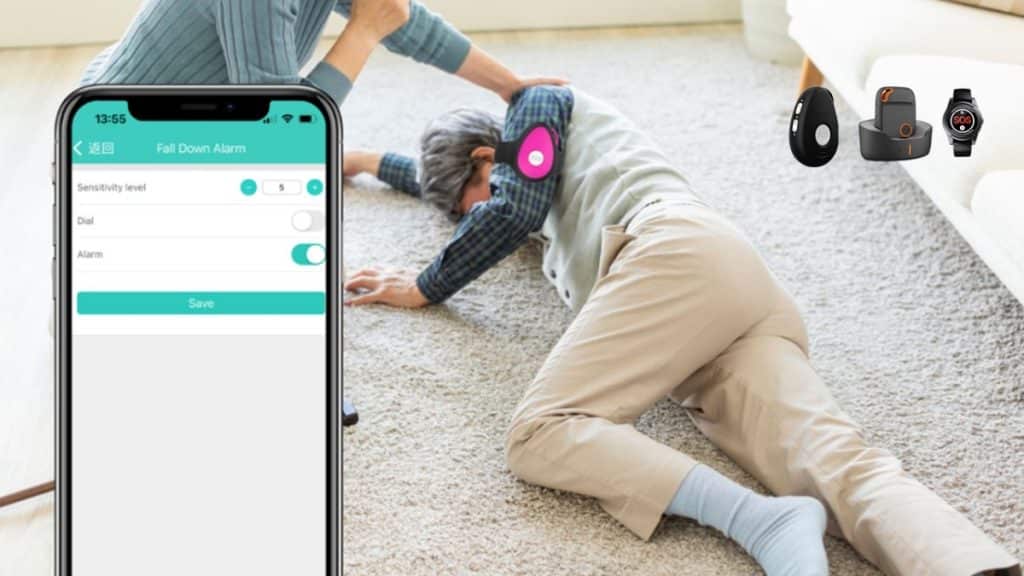As our loved ones age, ensuring their safety becomes a paramount concern. One of the most significant risks to elderly individuals is the potential for falls, which can lead to serious injuries and complications.
Falls are identified as the second major contributor to accidental or unintentional injury-related fatalities globally, according to the World Health Organization (WHO). However, with advancements in technology, particularly in the realm of fall detection devices, there’s hope for mitigating these risks and enhancing the quality of life for our seniors and that is having personal alarms for the elderly in australia.
Fall Rate in Australia
In Australia, falls are a significant concern among the elderly population. For the fiscal year 2021-22, falls resulted in 233,000 hospitalizations, equating to a rate of 910 per 100,000 population.
In the preceding year, 2020-21, there were 5,800 deaths attributed to falls, translating to a rate of 23 per 100,000 population. These statistics underscore the impact of falls on the health and well-being of older Australians, highlighting the need for effective prevention and intervention strategies.
Understanding the Risks
Falls among the elderly are a multifaceted issue influenced by various factors such as age-related decline in physical abilities, medical conditions, medication side effects, environmental hazards, and more.
Even seemingly minor falls can result in significant injuries, including fractures, head trauma, and psychological distress. Moreover, the fear of falling can lead to a decrease in mobility and independence, further exacerbating the issue.
The Role of Fall Detection Devices
Fall detection devices have emerged as invaluable tools in addressing the challenges posed by falls among seniors. These devices are typically wearable or installed in the home environment and utilize advanced sensors and algorithms to detect changes in motion and orientation indicative of a fall. Upon detection, they automatically trigger alerts to designated caregivers or emergency services, enabling swift intervention.
How Do They Work?
Most fall detection devices leverage accelerometers, gyroscopes, and sometimes additional sensors like barometers to monitor movements and detect deviations from normal activity patterns.
Algorithms programmed into these devices analyze sensor data in real-time to differentiate between routine activities and potential falls. Upon detecting a fall, the device initiates a series of actions, such as sounding an alarm, sending notifications to caregivers’ smartphones, or directly contacting emergency services.
Types of Fall Detection Devices
Wearable Devices: These are typically worn as pendants, wristbands, or clipped onto clothing. They offer the advantage of continuous monitoring, providing around-the-clock protection both indoors and outdoors.
Home-Based Systems: Installed in the living environment, these systems utilize sensors strategically placed throughout the home to monitor movements and detect falls. They’re particularly beneficial for individuals who spend a significant amount of time at home.
Integrated Solutions: Some modern smart home platforms integrate fall detection features into existing devices like smartwatches, smartphones, or home security systems, enhancing convenience and accessibility.
Benefits of Fall Detection Devices
Timely Assistance: One of the key benefits of fall detection devices is their capability to promptly call for help during emergencies. This swift response can greatly decrease the delay in medical aid reaching the person, potentially leading to life-saving outcomes.
Peace of Mind: For both seniors and their families, fall detection devices offer peace of mind by providing an additional layer of safety and security. Knowing that help is just a button press away or automatically triggered in case of a fall alleviates anxiety and promotes a sense of reassurance.
Maintaining Independence: By enabling seniors to live more independently while still ensuring their safety, fall detection devices empower them to maintain a higher quality of life. This can lead to increased confidence, improved mental well-being, and a greater sense of autonomy.
Data Insights: Many fall detection devices also collect and analyze data on activity levels and movement patterns over time. These insights can be valuable for caregivers and healthcare professionals in identifying trends, detecting potential health issues, and making informed decisions regarding care and intervention strategies.
Challenges and Considerations
While fall detection devices offer immense potential in safeguarding elderly individuals, they’re not without limitations and considerations:
Accuracy: Achieving high accuracy in fall detection while minimizing false alarms remains a challenge, particularly in distinguishing between falls and other activities like
sitting down or sudden movements.
User Acceptance: Some seniors may be resistant to adopting fall detection devices due to concerns about privacy, stigmatization, or discomfort with wearing or using the technology.
Cost: Cost can be a barrier to accessing fall detection devices, especially for individuals on fixed incomes or without adequate insurance coverage.
Technology Limitations: Certain environmental factors or technical issues such as low battery life or connectivity issues can impact the effectiveness of fall detection devices.
Conclusion
Fall detection devices represent a significant advancement in eldercare technology, offering a proactive approach to addressing the risks associated with falls among seniors. As we continue to prioritize the health and safety of our aging population, investing in fall detection devices is a crucial step towards creating a safer and more supportive environment for our seniors to thrive in.
